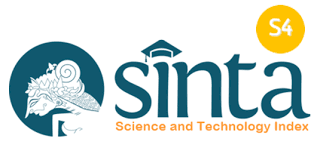The Role of Technology in English Language Instruction at Islamic University: A Review of Strategies and Challenges
DOI:
https://doi.org/10.55583/jkip.v5i4.1151Keywords:
Technology, English Language Instruction, Islamic University, Digital Literacy, Educational StrategiesAbstract
The integration of technology in education has transformed teaching and learning processes worldwide, including English language instruction. This article examines the use of technology in English instruction at Islamic universities, focusing on strategies employed and challenges faced. The study highlights the advantages of tools such as Learning Management Systems (LMS), language learning applications, and blended learning models. Furthermore, it explores issues like digital literacy, technological infrastructure, and cultural and religious sensitivities. The findings underscore the importance of professional development for educators and the need for culturally sensitive content. By analyzing theoretical and practical perspectives, this research provides recommendations for improving technology adoption in Islamic academic settings. The conclusion suggests policies to enhance faculty training, infrastructure development, and the ethical use of technology.
References
Ahmadi, M. R. (2018). The use of technology in English language learning: A literature review. International Journal of Research in English Education, 3(2), 116-125.
Al-Makhlafi, A. G., & Nayar, B. (2020). Integration of technology in language instruction: A case study in higher education. Journal of Educational Technology, 45(3), 234-249.
Brown, H. D. (2019). Principles of language learning and teaching (7th ed.). Pearson Education.
Chen, W., & Huang, C. (2022). Gamification in language learning: Enhancing engagement and retention. Journal of Computer-Assisted Learning, 38(1), 50-67.
Garrison, D. R., & Anderson, T. (2011). E-learning in the 21st century: A framework for research and practice (2nd ed.). Routledge.
Gomez, J. P. (2021). Multimedia in ESL classrooms: Bridging traditional and modern pedagogy. TESOL Quarterly, 55(3), 643-662.
Hassan, A., & Kumar, P. (2023). Overcoming challenges in integrating technology in education: Lessons from underfunded schools. Journal of Educational Innovation, 15(4), 212-228.
Hubbard, P. (2021). Foundations of CALL: A framework for technology in language learning. Language Teaching Research, 25(4), 321-338.
Jones, A., & Wang, Q. (2021). Exploring mobile-assisted language learning applications: Benefits and limitations. Educational Technology Research and Development, 69(5), 1234-1252.
Lee, K. (2021). Virtual simulations for language acquisition: A case study in ESL classrooms. Language Learning & Technology, 25(2), 77-95.
Miller, T., Smith, R., & Taylor, J. (2022). Teachers’ perspectives on technology-enhanced learning: Bridging the skills gap. Teaching and Teacher Education, 118, 103782.
Nguyen, T. T. (2022). Gamified learning in English as a foreign language classrooms. Innovations in Language Learning and Teaching, 16(3), 237-251.
Omer, S., & Hassan, Z. (2019). Balancing tradition and innovation in Islamic education. Islamic Studies Journal, 18(1), 45-62.
Park, H. (2020). Blogging as a tool for language learning: Engaging students in digital spaces. Journal of Language and Education, 6(4), 29-39.
Pun, M. (2014). The use of multimedia technology in English language teaching: A global perspective. Crossing the Border: International Journal of Interdisciplinary Studies, 1(1), 29–38.
Rahman, A., & Ali, Z. (2023). Addressing cultural sensitivities in English language instruction: A framework for Islamic universities. Journal of Educational Studies, 18(2), 101-120.
Rahman, M., et al. (2023). Bridging the digital divide: Infrastructure challenges in educational technology. Journal of Contemporary Educational Research, 15(1), 89-103.
Smith, J., & Jones, L. (2021). Transforming traditional classrooms with digital tools: A teacher’s guide. Educational Practice and Theory, 43(3), 211-224.
Smith, R., & Taylor, M. (2021). Peer-reviewed approaches in blended ESL classrooms. Journal of Second Language Studies, 10(4), 45-60.
Thompson, P., Brown, A., & Green, K. (2021). The role of multimedia in fostering active learning. Educational Media International, 58(2), 153-165.








